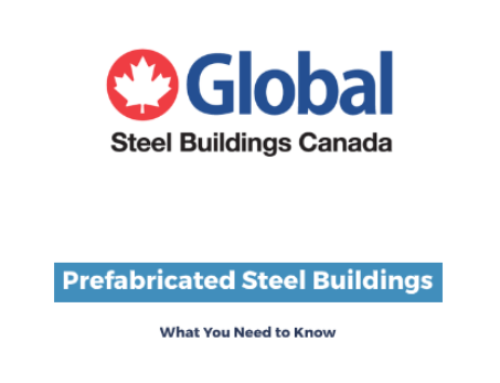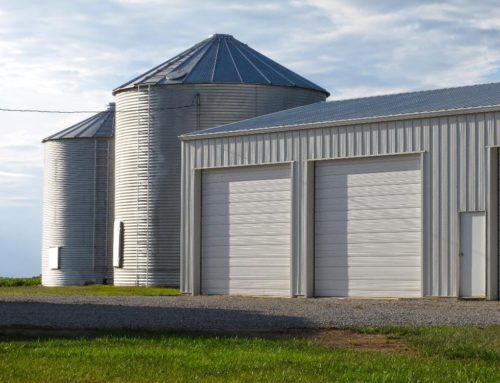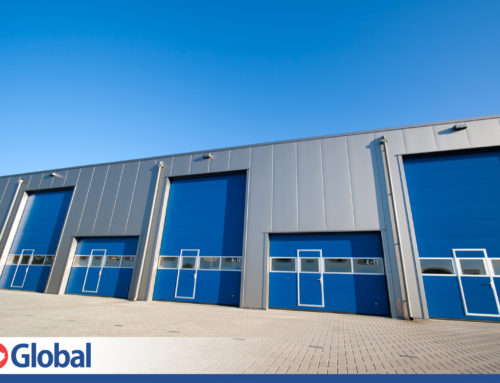How to Insulate a Steel Building
Insulation is key in a steel building. When it comes to the reasons to insulate a steel building, it’s not just about moderating the interior temperature. Keeping your steel building properly insulated will also prevent the growth of mold and mildew as well as prevent rust and corrosion. The following information highlights reasons as well as different materials used to insulate a steel building.
Mold, Mildew, Rust, and Corrosion
In addition to keeping the building comfortable, you should also insulate a steel building to prevent moisture from entering the structure through condensation. Condensation becomes a problem when the indoor and outside temperatures are at a significant variance. As moisture accumulates, mold and mildew will begin to grow, which can be a serious health concern for people with allergies or respiratory problems. Additionally, failure to sustain proper building maintenance practices can and will result in the moisture causing corrosion and rust.
Traditional construction materials will typically require the insulation to be installed between the studs. When it comes to the procedures to insulate a steel building, insulation is usually installed above the framing, which provides more continuous protection. Its placement prevents the transfer of heat as well as moisture in between the framing, exterior roof, and wall panels.
Types of Steel Building Insulation
There are four different types of materials used to insulate a steel building, and each material has varying costs as well as benefits. When you are considering which material is best to insulate a steel building, keep in mind the characteristics of the material should match with the building’s shape, size, geographic location, and the building’s intended use.
Reflective Foil
Reflective foil or foil bubble is a waterproof type of insulation with a reflective surface, which can significantly brighten the exterior of the building. In some cases, reflective foil is more costly, but it’s relatively simple to install. All you need are staples, glue, or nails, and reflective foil doesn’t require any special protective gear or equipment.
Fibe
How to Insulate a Steel Building
Prefab steel buildings are sustainable. When insulated metal buildings are energy efficient and provide protection against the elements. However, they do need to be properly designed and engineered for their intended use and location in order for them to deliver a long-term solutions. Although strong and resilient when properly constructed, prefab steel structures, like other buildings, face their own environmental threats. Condensation is one of these threats. When it comes to the reasons to insulate a steel building, it’s not just about moderating the interior temperature. Keeping your steel building properly insulated will also prevent the growth of mold and mildew as well as prevent rust and corrosion. To keep energy costs in check for your steel building it is important to keep warm air your steel building and keep cool air from escaping in the warmer months.
The following information highlights reasons as well as different materials used to insulate a steel building.
Mold, Mildew, Rust, and Corrosion
In addition to keeping the building comfortable, you should also insulate a steel building to prevent moisture from entering the structure through condensation. Condensation becomes a problem when the indoor and outside temperatures are at a significant variance. As moisture accumulates, mold and mildew will begin to grow, which can be a serious health concern for people with allergies or respiratory problems. Additionally, failure to sustain proper building maintenance practices can and will result in the moisture causing corrosion and rust.
Condensation can virtually happen on any surface of the building, but the ones most vulnerable are windows, framing members and the roof. Some common ways to deal with condensation in a steel building include vapor barriers. Vapor barriers are one of the most popular ways to prevent condensation. Designed to keep moisture out Here are some common ways in which condensation is dealt with in metal garages: Vapor Barriers Vapor barriers are is one of the most popular ways in which condensation is prevented. These barriers are designed to seal the building and keep the moisture out
How to Insulate a Steel Building
Traditional construction materials will typically require the insulation to be installed between the studs. When it comes to the procedures to insulate a steel building, insulation is usually installed above the framing, which provides more continuous protection. Its placement prevents the transfer of heat as well as moisture in between the framing, exterior roof, and wall panels.
Types of Insulation for Your Steel Building
There are many insulation options for your steel building, and each material has varying costs as well as benefits. When you are considering which material is best to insulate a steel building, keep in mind that different types of insulation have different characteristics. The material you choose should match with the building’s shape, size, geographic location, and the building’s intended use.
Reflective Foil
Reflective foil or foil bubble is a waterproof type of insulation with a reflective surface, which can significantly brighten the exterior of the building. In some cases, reflective foil is more costly, but it’s relatively simple to install. All you need are staples, glue, or nails, and reflective foil doesn’t require any special protective gear or equipment. Reflective foil provides a radiant barrier to insultate your invetment. Protect against heat transfer with reflective foil insulation.
Fiberglass Insulationat
As the most popular and least expensive method used to insulate a steel building, fiberglass comes in a “blanket” or rolls of material and doesn’t require professional installation. However, it’s a great idea to wear protective clothing, especially a mask because fiberglass will shred into fine fibers and irritate your skin. Due to the soft batting fiberglass material and its ability to absorb moisture, it will also attract rodents, birds, and nesting bugs. As a solution, fiberglass is generally sold with a protective facing, which doubles for interior appeal.
Insulated Panels
Insulated panels are made of two metal panels with insulating foam core between them. As one of the more expensive ways to insulate a steel building, insulated panels reduces the need for rigid board installation or fiberglass blankets. In any case, when you use insulated panels to insulate a steel building, the panels will provide great insulation, fast installation, and a modernized appearance.
Rigid Board
As the universal way to insulate a steel building, foam or “rigid boards” are ideal for practically any type of climate. With several available performance ratings, rigid boards are an effective way to insulate a steel building as well as dampen the exterior noise. In addition, using rigid boards to insulate a steel building doesn’t require a professional and is simple to install. However, you should inform the provider or seller of your steel building of your intent to use rigid boards as the method to insulate a steel building. When you use rigid boards for insulation, you will need longer panel lengths and extended fasteners.
Spray Foam
Spray foam insulation is a polymer combined with a foaming agent that gets sprayed into the steel wall and ceiling..When released it is in liquid form but expands quickly, drying into a solid mass of air-filled cells. Although it is While much more expensive than batt insulation, spray foam— when expertly applied— fills every tiny crevice, reducing air leaks. Spray foam is ideal for irregular surfaces and small gaps, cracks, or seams. It can also be used to insulate large areas such as walls, ceilings, or roof exteriors. Unusual shapes are the right choice for spray foam, and this material is preferred over batt and blanket insulation. Caulking is not needed either with spray foam as an airtight seal will be formed immediately
Loose Fill
Loose mineral fibers are blown into the walls of the building. It is a more expensive insulation option but it is common in residential buildings. The benefit of this type of insultaion is that it will fill the corners of the building and reduce potential for leaks. Loose fill has an R-value of 3 to 4 per inch. Using these loose fibres will conserve energy in your interior space.
Insulation is an important component of your steel building project. The experts at Global Steel Buildings Canada willensure your building is insulated to be compliant with the building codes of your local area. You want to ensure your buidling is insulated to stay cool when there are high temperatures outside and conversley provide a thermal boundary when it is cold. Be confident knowing that your new steel building will be outfitted with the appropriate insuation for your locale and purpose.





